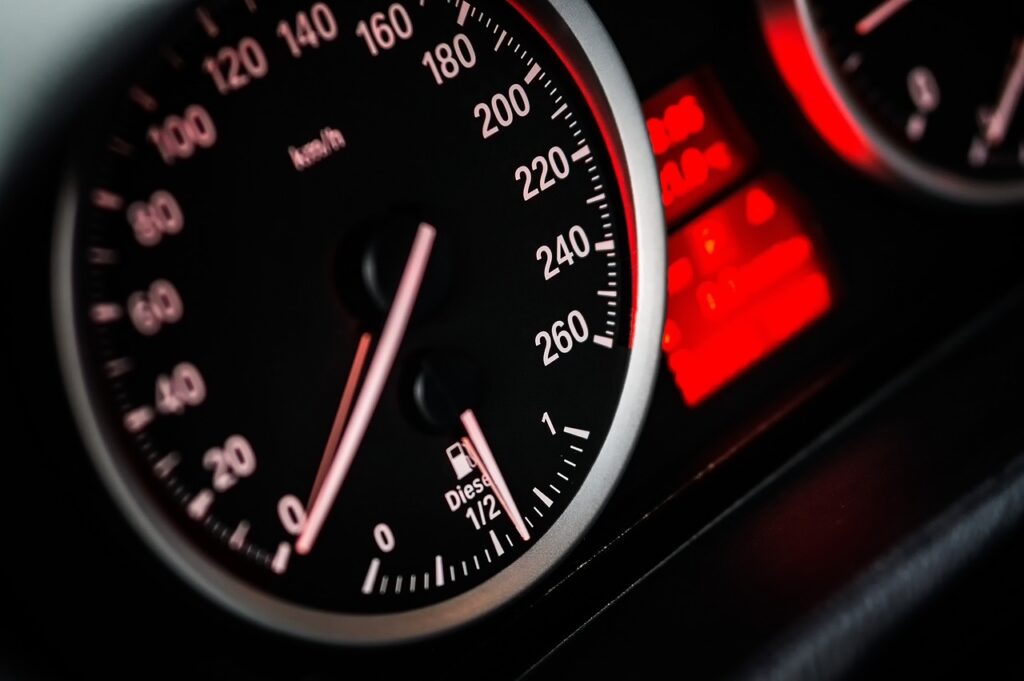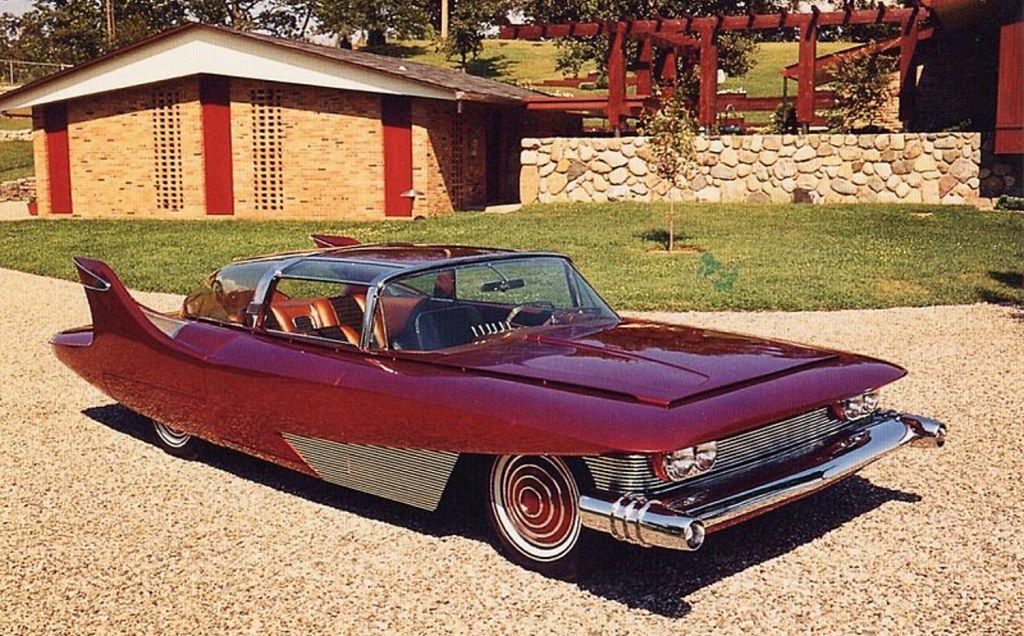In today’s dynamic car market, the prospect of purchasing a vehicle often comes with a significant question: “How much should I truly spend on a car payment?” It’s a common dilemma, especially when a figure like $300 per month might feel like a mere drop in the bucket. However, rushing into a loan without a clear financial strategy can lead to unforeseen stress and impact your overall financial well-being. This article aims to demystify car affordability, providing practical, actionable advice that empowers you to make informed decisions and approach your next vehicle purchase with confidence.
Financial wisdom suggests that a car payment is just one piece of a larger automotive puzzle. Experts across the board advise a balanced approach, considering not just the monthly installment but the entire spectrum of car-related expenses. From fuel to insurance and maintenance, these costs quickly add up, transforming a seemingly manageable payment into a significant financial burden if not properly accounted for. Our goal here is to equip you with the knowledge to navigate this complex landscape, ensuring your next car purchase fits comfortably within your budget and supports your broader financial goals.
We’ll delve into proven financial rules, offer concrete strategies, and crunch some numbers to illuminate the path to smart car ownership. This comprehensive guide will help you calculate what you can genuinely afford, weigh different financing options, and ultimately get behind the wheel of a vehicle that enhances, rather than strains, your life. By understanding and applying these essential guidelines, you can avoid financial stretches and achieve a more stable financial future. Let’s explore the foundational elements that will shape your car buying journey.

1. **The 10% Rule: Your Car Payment Anchor**One of the most fundamental principles in car financing, widely recommended by financial experts, is to preserve your monthly car payment at less than 10% of your take-home pay. This “magic number” serves as a crucial starting point for setting a responsible budget, ensuring that your primary vehicle expense doesn’t consume an outsized portion of your income. The rationale behind this rule is straightforward: by adhering to a 10% limit, you guarantee that you have extra cash on hand for other necessities like housing, food, and, well, living, preventing a situation where your car payment dictates your lifestyle.
To illustrate, if your after-tax monthly income is $3,000, then a $300 car payment would align perfectly with this guideline. This benchmark provides a clear ceiling, guiding your search for vehicles that fall within a financially sound range. It emphasizes the importance of understanding your net income – what you actually receive after taxes and other deductions – rather than focusing solely on your gross earnings. This distinction is vital for accurate budgeting and avoiding overcommitment, as budgeting based on gross income can lead to a significant miscalculation of available funds.
This 10% rule is more than just a theoretical guideline; it’s a practical tool to gauge affordability. If a dealer pushes you towards a car that necessitates a payment exceeding this percentage, it’s a strong signal to reconsider or explore alternative options. NerdWallet explicitly recommends this limit, and even suggests a tangible way to test it: “Check if you can really afford the payment by depositing that amount into a savings account for a few months.” This real-world test allows you to experience the impact on your cash flow before committing to a loan.
It’s crucial to understand that the 10% rule specifically addresses the car payment itself, not the total cost of car ownership. While it’s an excellent anchor and a healthy first step to ensure the installment portion is manageable, it’s just the beginning of a comprehensive affordability assessment. This foundational rule empowers you to enter negotiations or online searches with a clear, predetermined maximum payment, fostering a confident and financially disciplined approach to car buying.

2. **The 15-20% Rule: Covering All Car Costs**Beyond the monthly loan payment, financial experts consistently advise a broader perspective on car affordability, introducing the 15-20% rule for total car costs. This comprehensive guideline suggests that all automotive expenses, including the car payment, gas, insurance, and maintenance, should not exceed 15% to 20% of your monthly take-home pay. This rule is designed to prevent a common oversight where individuals only account for the loan payment, neglecting the significant ongoing costs of vehicle ownership that can quickly accumulate.
The range—15% to 20%—offers some flexibility, acknowledging that individual financial situations and preferences vary. Ideally, you should aim for a total car cost that doesn’t exceed this bracket. For instance, those with higher discretionary income or fewer competing financial obligations might lean towards the upper end, while others might find the lower end more prudent, especially if other financial goals are pressing. This rule encourages a holistic view, pushing buyers to consider the true financial footprint of a vehicle before committing to a purchase.
Adhering to this percentage helps ensure that your car is truly affordable in the long run, not just in terms of its initial payment. Neglecting these additional expenses can quickly lead to financial strain, making it challenging to save, pay off other debts, or meet long-term financial goals. Experts explicitly state that “the car payment isn’t your only car expense! Make sure to consider fuel and maintenance expenses” and further advise, “Make sure your car payment does not exceed 15%-20% of your total income.” This emphasizes that the 10% rule for the payment is merely a starting point, and the 15-20% rule for total costs provides a more complete picture of financial health.
This guideline serves as a vital safeguard against overspending. If your total car costs, including the payment, gas, insurance, and maintenance, push beyond this 15-20% threshold, a $300 car payment—or any payment, for that matter—might indeed be too much. It’s a clear signal to reassess your budget, explore more economical vehicle options, or find ways to reduce other car-related expenses to stay within a comfortable and sustainable financial range.

3. **Mastering Your Budget: Calculate Take-Home Pay**The cornerstone of applying any car affordability rule, especially the 10% and 15-20% guidelines, is accurately calculating your monthly take-home pay. This figure, also known as your net pay, represents the actual amount of money you receive after all mandatory deductions have been made from your gross income. Without this precise number, any percentage-based budgeting becomes speculative and potentially misleading, leading to a false sense of what you can truly afford.
To determine your take-home pay, begin by subtracting taxes and any other deductions, such as retirement contributions, health insurance premiums, or pre-tax benefits, from your gross income. This gives you your net pay per pay period. Then, to derive your monthly take-home pay, divide that number by the number of paychecks you receive per month. For instance, if you get paid bi-weekly, you’ll generally receive two paychecks in most months, but twice a year you’ll receive three. Averaging this out over the year or carefully accounting for all paychecks ensures you have a consistent and reliable monthly figure to work with.
This seemingly simple calculation is often overlooked but is absolutely critical. It provides the true baseline against which all your expenses, including car payments, should be measured. Understanding your exact take-home pay empowers you to set realistic spending limits and prevents the common trap of budgeting based on a higher, pre-tax income, which invariably leads to financial discomfort and a feeling of being financially stretched down the line. It’s the essential first step before you even begin to consider car models or loan options.
By taking the time to accurately calculate your net monthly income, you lay a solid foundation for all subsequent financial decisions related to car ownership. This foundational figure allows you to precisely apply the recommended percentages, transforming abstract rules into concrete, personalized budget limits. It’s an empowering exercise that puts you in control, making sure your car payment truly reflects what you can comfortably afford each month.
Read more about: Precision Spending: 12 Budgeting Underdogs That Dominate Financial Debt
4. **Beyond the Payment: Factoring in All Car Expenses**When contemplating a car purchase, it’s easy to fixate solely on the monthly loan payment, but this narrow focus can mask the true cost of vehicle ownership. A comprehensive financial plan demands that you factor in all car-related expenses, which extend far beyond the principal and interest of your auto loan. These additional costs are non-negotiable aspects of having a car and neglecting them can swiftly derail an otherwise well-planned budget, leading to unexpected financial strain.
The primary expenses to consider alongside your monthly payment include gas, insurance, and maintenance. Gas costs fluctuate based on current fuel prices, your chosen vehicle’s fuel efficiency (measured in miles per gallon, or mpg), and your personal driving habits and commute distance. Insurance premiums can vary significantly depending on the vehicle’s make and model, its safety features, your driving record, age, and even your geographical location. A newer or more powerful vehicle, for example, often comes with higher insurance rates.
Maintenance costs, while sometimes unpredictable, are an unavoidable part of owning a car. These encompass everything from routine services like oil changes, tire rotations, and fluid checks to more significant and potentially expensive repairs that can arise unexpectedly. For used cars, in particular, maintenance costs can be a more substantial factor, which many people overlook. It’s wise to budget a contingency for these unforeseen expenses to avoid being caught off guard.
Before heading to a dealership or even beginning an online car search, take the time to add up the estimated costs for these critical components. The EPA’s Fueleconomy.gov website can assist with detailed fuel economy figures and annual fuel cost estimates for both new and used vehicles, while contacting your insurance agent for quotes specific to vehicles you’re considering is essential. This proactive step allows you to compare your total projected car cost against your 15-20% budget limit. If the sum of all these expenses, plus your desired car payment, exceeds that threshold, it’s a clear signal that the initial payment alone might be too much, prompting you to explore more affordable options or adjust other parts of your budget.

5. **Budget Flexibility: The Balanced Budget Approach**While general rules like the 10% and 15-20% guidelines provide excellent benchmarks, personal finance is rarely one-size-fits-all. This is where the balanced budget approach introduces valuable flexibility, allowing you to tailor your car payment strategy to your unique financial situation. It acknowledges that not everyone’s budget perfectly aligns with rigid percentages, offering a pathway to afford a car even if it means adjusting spending in other areas to maintain overall financial equilibrium.
The core idea is to understand your overall budget and identify where you might have more wiggle room. NerdWallet recommends using the 50/30/20 rule for overall budgeting, which divides your take-home pay into three general spending categories: 50% for necessities (like housing, food, and transportation, which includes your car payment and auto expenses), 30% for wants (entertainment, travel), and 20% for savings, credit card repayment, and long-term financial goals. A monthly auto loan payment typically falls into the “needs” category, especially if the car is essential for work or school.
However, the balanced budget approach can provide significant flexibility within this framework. For instance, if you share housing expenses with a roommate, your fixed costs for housing might be lower than average. This could free up a higher percentage available for a car payment within your “needs” category, without compromising other essential expenditures. This strategic reallocation allows you to optimize your budget based on your specific living arrangements and financial commitments.
Alternatively, if you have a strong desire for a more expensive car than initially budgeted, you could consider classifying a portion of its monthly payment as “wants” spending. This means you would consciously decide to reduce spending in other “wants” categories, such as entertainment or travel, to accommodate the higher car expense. The key to this flexibility is maintaining a balanced overall budget. If you plan to spend less in some areas, then you may choose to spend more than 10% of your take-home pay on a car payment, ensuring that the overall budget remains sustainable and aligned with your financial priorities.

6. **Power of a Down Payment: Reducing Your Loan**Even if a target car payment seems out of reach initially, one of the most effective strategies for making it more affordable is to save up for a larger down payment. A substantial down payment acts as a powerful lever, directly reducing the total amount you need to borrow for the car. This, in turn, translates into a smaller loan principal, which is a significant factor in lowering your monthly payments and potentially the total interest paid over the life of the loan, saving you money in the long run.
Financial experts commonly recommend a down payment of 10-20% of the total car price. Achieving this percentage can noticeably impact your monthly outflow, making higher-priced vehicles more accessible or simply making any vehicle more financially comfortable. The less you borrow, the less interest accrues, leading to substantial savings over time, especially on longer loan terms where interest can compound significantly. A bigger down payment means a smaller loan amount, which directly translates to a lower monthly payment, making your budget more breathable.
Furthermore, making a larger down payment can improve your loan-to-value ratio, making you a less risky borrower in the eyes of lenders. This can potentially qualify you for better interest rates, particularly if you have a less-than-perfect credit score, thereby reducing both your monthly payment and the total cost of the loan. Lenders view a significant upfront investment as a sign of financial commitment and stability.
Trading in an existing vehicle is another excellent way to augment your down payment, further reducing the amount you need to finance. By researching online pricing guides like Kelley Blue Book and Edmunds, you can get the best price for your trade-in, effectively lowering the overall cost of your new car. By proactively saving or utilizing a trade-in, you gain considerable financial leverage, making your car purchase more manageable and less burdensome on your monthly budget.
Read more about: Mastering Your Money: An In-Depth Guide to Personal Budgeting for Financial Control and Future Security
7. **Optimizing Loan Terms: The Shorter Path to Savings**Beyond your down payment, the length of your car loan, known as the loan term, profoundly impacts your monthly payments and the total amount of interest you’ll pay over time. While it might seem appealing to stretch out a loan over many years to achieve a lower monthly payment, this approach often leads to significantly higher overall costs. Financial experts consistently caution against excessively long loan terms due to the accumulating interest.
NerdWallet specifically advises that for used cars, loan terms should ideally be no more than 36 months. For new cars, the recommendation extends slightly to no more than 60 months. This guidance highlights a crucial trade-off: a shorter loan term will indeed result in higher monthly payments, but the benefit is a substantial reduction in the total interest paid over the life of the loan. For example, opting for a 36-month loan instead of a 60-month loan means less money wasted on interest in the long run.
Taking out a longer loan can result in paying considerably more in interest overall, making what seemed like an affordable monthly payment far more expensive in total. It’s a common tactic used by dealers to lower the monthly payment to fit a buyer’s budget, but this can mask the true financial burden. Focusing solely on the monthly figure without considering the total cost of financing, including interest over the full term, can lead to substantial financial waste. Therefore, prioritizing a shorter, manageable loan term is a savvy financial move.
8. **Shopping for the Best Interest Rate: Your Credit Score’s Power**After determining an ideal loan term, the next critical step to securing an affordable car payment is to actively shop around for the best possible interest rate. The interest rate you receive directly influences both your monthly payment and the total cost of your auto loan. Comparing rates from multiple lenders can genuinely save you hundreds, if not thousands, of dollars over the life of the loan, making it a non-negotiable part of the car-buying process.
Your credit score plays a pivotal role in the interest rate lenders offer. Generally, a higher credit score signals less risk to lenders, which typically translates into lower interest rates. Conversely, lower credit scores usually result in higher rates, making it more expensive to borrow money. This is especially crucial if you need a bad credit auto loan, as these loans tend to have the highest interest rates, making thorough comparison even more vital.
It’s important to recognize that interest rates differ significantly between various lenders. Simply accepting the first rate offered by a dealership or your bank might mean missing out on a more competitive deal. NerdWallet’s auto loan calculator is a useful tool that allows you to compare various rates and terms from different financial institutions, empowering you to find the most competitive rate on your auto loan. This proactive approach ensures you’re not overpaying for the privilege of borrowing money.
When evaluating offers, pay close attention to the Annual Percentage Rate (APR). The APR is a more comprehensive measure than just the interest rate, as it includes the interest rate plus any lender fees. Understanding the full cost of borrowing through the APR allows for a clearer comparison across different loan options and helps you avoid hidden charges, ensuring you make a truly informed decision.
9. **The Savvy Choice: Exploring Used Cars**If you’re finding that new car prices, even with a solid down payment and optimized loan terms, are pushing your budget limits, exploring the used car market can be a highly effective strategy. Used cars are generally more affordable than new cars right off the bat, providing a lower entry point into vehicle ownership. This immediate cost saving can make a significant difference in bringing your monthly payment within a comfortable range.
One of the most compelling financial benefits of buying a used car is depreciation. New cars experience their most rapid depreciation during their first few years on the road. By purchasing a used vehicle, you essentially let the first owner absorb this substantial initial loss in value, meaning you get more car for your money. This slower rate of depreciation on a used car helps preserve its value longer during your ownership, offering better financial stability.
While maintenance costs can sometimes be a concern with older vehicles, the overall savings from a lower purchase price and reduced depreciation often outweigh this factor. Many lightly used or certified pre-owned cars offer a sweet spot, providing modern features and reliability without the steep price tag of a brand-new model. It allows buyers to avoid major repairs for a while, making it a balanced and frugal choice.
Considering a used car can dramatically lower your loan amount, which directly leads to a smaller monthly payment. For example, a $300 car payment on a three-year loan can buy a $10,000 car, while on a six-year loan it could buy an $18,000 car. This flexibility allows you to access a wider range of vehicles that fit your budget, making a $300 car payment feel less restrictive and more manageable within your financial plan. By embracing the used car option, you can achieve comfortable car ownership without breaking the bank.
Read more about: Navigating the Digital Road: Which Car Infotainment System Is Easiest to Use in 2025?
10. **Deciphering Lender Mechanics: Beyond the Monthly Payment**Understanding how lenders determine your car payment is crucial for navigating the car-buying process effectively and avoiding common pitfalls. Several key factors combine to dictate the amount you’ll pay each month: the total loan amount, the length of the loan term, and the Annual Percentage Rate (APR), which encompasses both the interest rate and any associated lender fees. These elements are interconnected, and a change in one can significantly affect the others.
Dealers, for instance, might try to reduce your monthly payment by extending the loan term. While this makes the monthly figure appear more attractive, it’s a strategy that can cost you considerably more in interest over the life of the loan. If you focus only on the monthly car payment and ignore total financing costs, you risk wasting a lot of money. It’s a classic example of how a seemingly low payment can hide a much higher overall expense.
To illustrate this, consider two different loans that result in the same $530 monthly payment. One loan, for $22,318 at a 6.57% APR over 48 months, would incur $3,122 in total interest. Another loan, for $28,804 at a 9.75% APR over 72 months, would cost $9,356 in total interest. Despite identical monthly payments, the total interest paid differs by more than $6,000, underscoring the importance of looking beyond just the monthly number.
This example vividly demonstrates that the overall cost of financing is paramount. Always ask for the total interest you will pay over the life of the loan, not just the monthly payment. Having a maximum car payment amount in mind and sticking to it can certainly help when negotiating at a dealership, but it must be paired with a clear understanding of the loan’s total financial footprint to ensure you are truly getting a good deal.

11. **Unlocking Savings: The Power of Refinancing**Even after you’ve purchased a car, your financial journey with that vehicle isn’t necessarily set in stone. Refinancing your car loan presents a powerful opportunity to potentially reduce your interest rate, lower your monthly payments, or decrease the total amount you pay for a car – or even all three. This strategy is particularly effective if your financial circumstances have improved since you originally took out the loan, such as a significant boost to your credit score.
When you refinance, you essentially replace your current car loan with a new one, ideally with more favorable terms. If your credit score has improved since the initial purchase, you might qualify for a much lower interest rate, directly translating into savings on your monthly payments and less money paid in interest over time. This makes your car ownership more financially comfortable and frees up cash for other important financial goals.
Another option within refinancing is cash-out refinancing. This process involves replacing your current car loan with a new one, but you also borrow more against the equity you’ve built in your vehicle, rolling that additional amount into your refinance loan. This can provide access to funds for other needs, but it’s a decision that requires careful consideration as it increases your total debt on the vehicle.
Refinancing is not just for those looking to lower payments; it can also be used to shorten your loan term, reducing the total interest paid, or to simplify your finances. It’s a dynamic tool that empowers car owners to adapt their loan to their evolving financial health, ensuring their car payment continues to fit comfortably within their budget long after the initial purchase. Leveraging refinancing wisely can significantly enhance your financial well-being.

12. **Integrating Car Payments into a Holistic Financial Plan: When a Car Payment Doesn’t Fit**Ultimately, a car payment is just one component of your larger financial picture. While adhering to rules like the 10% and 15-20% guidelines provides a solid framework, true financial peace comes from integrating your car expenses into a holistic financial plan that supports all your goals. What happens if, after calculating your take-home pay, factoring in all expenses, and optimizing loan terms and rates, a car payment still doesn’t comfortably fit? Don’t despair; there are still smart, actionable options.
If you’ve rearranged your budget, shopped loans extensively, and still can’t find a car payment you can comfortably afford, one of the most practical solutions is to reduce the amount you need to borrow. This might involve considering a less expensive car model or continuing to save up for an even larger down payment. Remember, the less you borrow, the lower your car payment will inherently be, easing the strain on your monthly budget. Additionally, maximizing the value of any vehicle trade-in by researching online pricing guides like Kelley Blue Book and Edmunds can further reduce your loan amount.
Sometimes, the wisest financial decision is simply to delay buying a car. In today’s market, where inflated car prices and payments are common, putting off a purchase might mean you’ll be in a better financial position later. Some car buyers are currently delaying their purchases with the hope that car prices and payments will eventually fall, allowing them to secure a better deal without feeling financially stretched. This patience can save you significant money and stress in the long run.
Buying a car is a significant financial decision, one that should never be rushed. Take the time to do your research thoroughly, explore all your options, and make a choice that truly fits comfortably within your overall budget and long-term financial aspirations. By taking these deliberate steps, you can avoid financial strain and ensure your vehicle enhances your life, rather than becoming a source of stress. Happy car shopping, and may your financial journey be smooth and well-planned!









